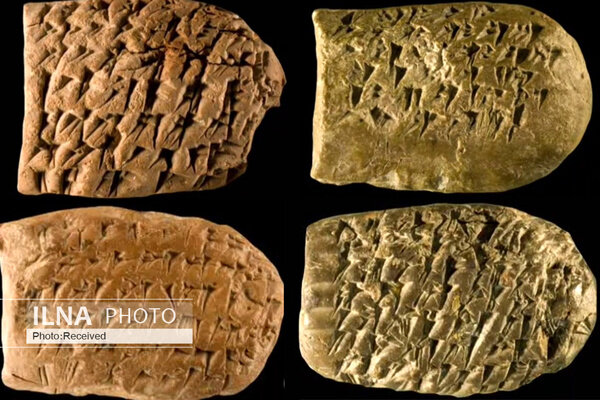Achaemenid workers paid silver for wages, study on clay tablets finds

TEHRAN – A fresh study on inscribed clay tablets, which were used for the treasury archives of the Achaemenid Empire, has revealed workers of the mighty kingdom were paid silver coins for their wages.
Conducted by Iranian archaeologist Soheli Delshad, the study investigated 33 clay tablets, the majority of which dating back to the time of Darius I (Darius the Great), who was the third Persian King of Kings, reigning from 522 BC until he died in 486 BC.
Darius I was one of the greatest rulers of the Achaemenid dynasty, who was noted for his administrative genius and his great building projects. Darius attempted several times to conquer Greece; his fleet was destroyed by a storm in 492, and the Athenians defeated his army at Marathon in 490.
Of the tablets, all of which bearing Elamite cuneiform, 28 have been selected from the royal treasury of Persepolis, and the remaining four from a fort archive, ILNA quoted Delshad as saying on Wednesday.
The tablets reveal that the wages of workers were paid in silver from the king's treasury, he stated.
According to the archaeologist, 136 men who received the payments were described as masonry (and possibly plasterers).
In 2019, hundreds of Achaemenid clay tablets and related fragments, which were on loan from Iran to the Oriental Institute of the University of Chicago since 1935, were returned home.
In February 2018, and following years of ups and downs, the fate of those ancient Persian artifacts, was left in the hands of a U.S. Supreme Court, which ruled in favor of Iran.
Archaeologists affiliated with the University of Chicago discovered the tablets in the 1930s while excavating in Persepolis, the ceremonial capital of the Persian Empire. However, the institute has resumed work in collaboration with colleagues in Iran, and the return of the tablets is part of a broadening of contacts between scholars in the two countries, said Gil Stein, director of the Oriental Institute at the University of Chicago.
The tablets reveal the economic, social, and religious history of the Achaemenid Empire (550-330 BC) and the larger Near Eastern region in the fifth century BC.
The Achaemenid [Persian] Empire was the largest and most durable empire of its time. The empire stretched from Ethiopia, through Egypt, to Greece, to Anatolia (modern Turkey), Central Asia, and to India.
The royal city of Persepolis ranks among the archaeological sites which have no equivalent, considering its unique architecture, urban planning, construction technology, and art. Persepolis, also known as Takht-e Jamshid, whose magnificent ruins rest at the foot of Kuh-e Rahmat (Mountain of Mercy) is situated 60 kilometers northeast of the city of Shiraz in Fars province.
The city was burnt by Alexander the Great in 330 BC apparently as revenge to the Persians because it seems the Persian King Xerxes had burnt the Greek City of Athens around 150 years earlier. The city’s immense terrace was begun about 518 BC by Darius the Great, the Achaemenid Empire’s king. On this terrace, successive kings erected a series of architecturally stunning palatial buildings, among them the massive Apadana palace and the Throne Hall (“Hundred-Column Hall”).
This 13-ha ensemble of majestic approaches, monumental stairways, throne rooms (Apadana), reception rooms, and dependencies is classified among the world’s greatest archaeological sites. Persepolis was the seat of the government of the Achaemenid Empire, though it was designed primarily to be a showplace and spectacular center for the receptions and festivals of the kings and their empire.
Elamite language, extinct language spoken by the Elamites in the ancient country of Elam, which included the region from the Mesopotamian plain to the Iranian Plateau. According to Britannica, Elamite documents from three historical periods have been found. The earliest Elamite writings are in a figurative or pictographic script and date from the middle of the 3rd millennium BC.
Documents from the second period, which lasted from the 16th to the 8th century BC, are written in cuneiform; the stage of the language found in these documents is sometimes called Old Elamite.
The last period of Elamite texts is that of the reign of the Achaemenian kings of Persia (6th to 4th century BC), who used Elamite, along with Akkadian and Old Persian, in their inscriptions. The language of this period, also written in the cuneiform script, is often called New Elamite.
AFM
Leave a Comment